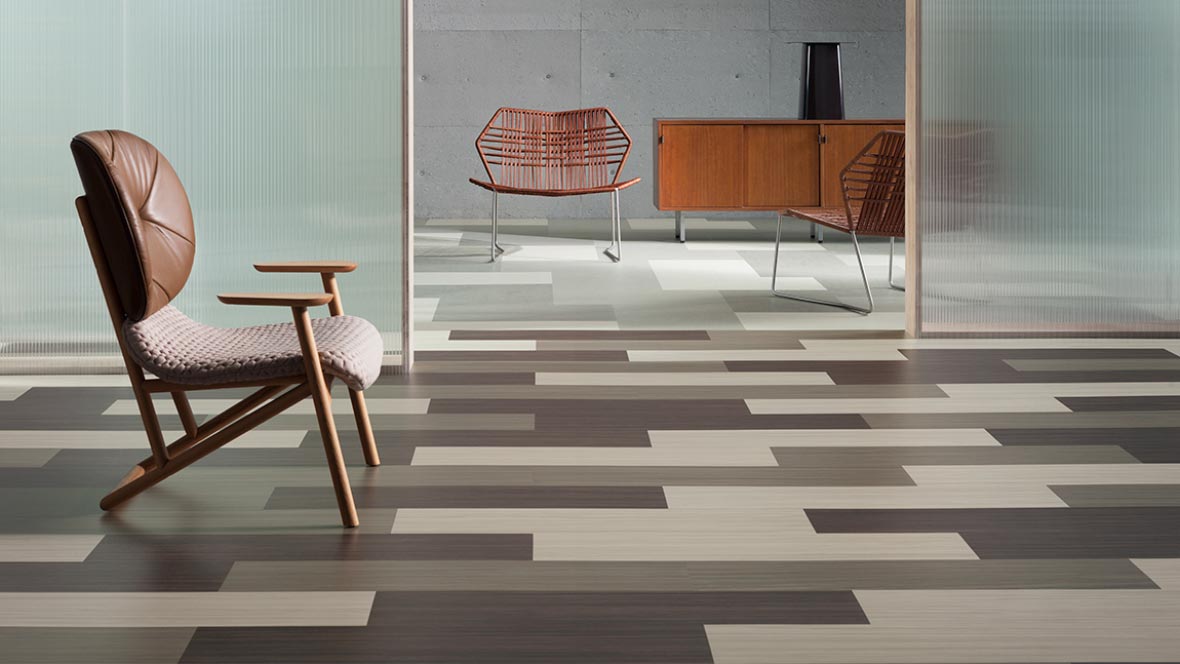From Guest Blogger Amelia Atkins: Trendy Ways to Green-Up Your Floors This Year

Cork
If you still view cork as a material for pinning notes on reminder boards or sealing wine bottles, you are living in the past. Cork is a fantastic eco-friendly material that is highly-customizable (it can be adapted to any home and design style) and can last up to thirty years. No trees are cut or hurt in any other way to harvest and produce cork. Furthermore, this material has anti-bacterial properties, so there will be no piling up of allergens in your home.
Bamboo
Bamboo is not a new material in the world of interior, and it recently gained even more attention because of its eco-friendly properties. Its sustainability comes from fast growth (three to five years to full growth). It also shares many of the qualities of hardwood, such as low-maintenance and durability. Just like cork, bamboo is very customizable, so it can blend into every design.
Concrete
Up until recently, concrete would never been considered a main flooring material for stylish homes. However, trends change, and instead of being a sub-flooring material, concrete has risen to be a fantastic choice for eco-friendly flooring with a variety of possibilities for customization which include polishing, coloring, producing tiled effect, inlaying glass, etc.
Marmoleum
It sounds like linoleum, the flooring your grandmother had in her house, and you hated it. Well, it’s nothing like linoleum, especially in terms of sustainability. It has become a popular choice for flooring installation in Sydney and other big cities, because of its anti-static and anti-bacterial properties, but also because of the design flexibility and affordable price and installation. The ingredients such as wood flour, limestone, cork flour, rosins and linseed oil make this flooring durable and minimize the environmental footprint.
Glass tile
When considering eco-friendly flooring options, you shouldn’t forget about your kitchen and bathroom which take up a huge part of your home, and you can’t use just any material there. You need flooring that is both water-resistant and environmentally-friendly. For that, you can choose glass tiles, which are made of recycled beer and wine bottles. They are durable, resistant and come in a variety of designs.
Recycled carpets
In September 2017, we had the opportunity to see models walking down the green carpet on Milan Fashion Week, and we are not talking only about colors. The carpet was made from recycled fishing nets with the goal of promoting ethical and environmentally-friendly fashion. And, what happens in Milan, doesn’t stay in Milan. This trend is making its way to our homes with many carpet and rug manufacturers seeking to recycle corn sugar, plastic bottles and other waste into beautiful floor coverings.
Luxury vinyl tile
Traditional hardwood floor is not only expensive, but it can also have a terrible impact on the environment. However, no one can deny its appealing appearance and dashing presence in every home it inhabits. Luxury vinyl tile can provide you a similar look and quality without the need for cutting down forests to do that.
Reclaimed wood
Wood floorings are as popular as ever, but as we are becoming aware of the damage we have done to our forests, we are beginning to seek alternatives. Reclaimed wood is a reusable commodity that looks rustic, warm and simply amazing, without harming our planet. By opting for reclaimed wood flooring, you are contributing to saving energy, reducing fossil fuel use, eliminating pollution and minimizing virgin timber harvesting.
Going green doesn’t have to mean you are sacrificing your style to create a healthier and more eco-friendly home. In fact, these trends are proving the opposite, so make 2018 the year when you will start greening up your home – from the floor up.







